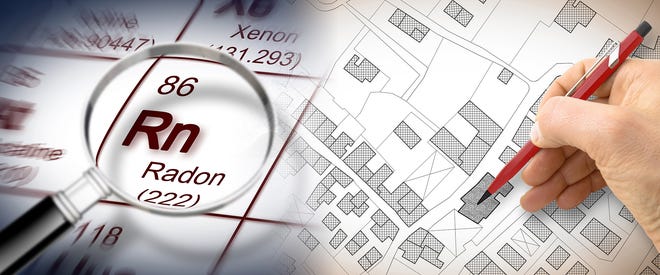Do You Need to Do Radon Test Again

In past articles we've discussed why it's important to test for radon in your home. But, there seems to be confusion around the topic of when and how often testing should actually be done.
There is a common misconception that if your test shows radon levels below the EPA action level, you're set. But, think of it this way...if your 6-month dental check-up shows no cavities, does that mean you never have to go back for an exam?
Radon testing is not a one-and-done practice. Regardless of whether your property passes or fails a test, follow-ups are critical. Let's take a look at how often you should test and why.
What is radon?
First, a quick recap. Radon is an odorless gas that comes from uranium found in all types of soil and rock. While we are exposed to radon every day, serious health issues can arise when this radioactive gas is trapped indoors. In fact, radon is the leading cause of lung cancer for non-smokers, making it the second leading cause of lung cancer in the U.S. According to the Environmental Protection Agency (EPA), radon is responsible for about 21,000 lung cancer deaths every year.
High levels of radon are found in every state across the country, in every type of home or building, regardless of age or whether it has a basement. The Radon Act 51 passed by Congress set the target for indoor radon levels at 4 pCi/L. According to the EPA, two-thirds of American homes exceed that number.
When should testing be done?
Radon tests are most often performed during the home inspection phase of a real estate transaction. While it's not part of the standard inspection, it's recommended as an add-on for around $100.
Even if buyers do pay for a radon test at inspection time, they typically never conduct further testing. Salina Murton, certified radon inspector with Accurate Inspections, LLC, says this is a problem because radon is constantly in motion and its levels vary over time.
"A one-time test is great for understanding radon levels in your home at that particular point in time," she said. "However, the only way to ensure you're protected from the effects of radon is to monitor levels over the long term, and that means regular testing."
If you run a quick search online, you'll find a lot of recommendations on when to test for radon. For instance, the change of seasons can drastically affect radon levels so it's advised that homeowners run testing in alternating seasons. It's also suggested that homeowners test for radon whenever there is seismic activity, like an earthquake, or anytime there is new construction or major groundwork happening near your home.
The EPA also says, "If you are planning any major structural renovations, such as converting an unfinished basement area into living space, it is especially important to test the area for radon before you begin the renovation. If your test results indicate a radon problem, radon-resistant techniques can be inexpensively included as part of the renovation." The agency also suggests testing again once the work is complete.
While screening during these times is advised, Murton says homeowners should test every 2-3 years, regardless of these factors.
"Think of it as part of your routine home maintenance," she said. "As the EPA says, 'radon is a health hazard with a simple solution,' and routine testing is really a small price to pay for peace of mind."
And, remember, you can't predict radon levels based on state, local, or neighborhood measurements. Don't rely on results taken in other properties in the neighborhood to estimate the radon level in your home. Routine testing is the only way to find out what your radon level is.
What's involved in the testing process?
Any homeowner can purchase a radon testing kit online or at a local home improvement store. However, if you're uncomfortable testing on your own, or would like to confirm the results of a home test, consider hiring a professional. Accurate Inspections, for instance, is certified in radon testing and their process is relatively simple.
The team sets up an electronic testing device in the lowest possible living area, like a basement. Typically, they'll have you close up all windows and doors throughout the level for a few days prior to testing in order to get an accurate reading. The testing device is placed at least 24 inches away from an exterior wall, and set on a ladder to keep it at least 24 inches off the ground.
Once the test is complete — about 48 hours later — a report is generated that provides an hour-by-hour look at radon levels in the home. If the average falls at or above the EPA's recommended level, the problem can be taken care of by installing a mitigation system, which can run anywhere from $550-$1,500, depending on the application.
Murton says this brings up another common misconception — that once a mitigation system is installed there is no need for further testing.
"While these systems can greatly reduce the amount of radon that accumulates inside your property, they can't completely eliminate it," she said. "It's important to continue testing every few years to ensure your system is working properly and levels remain low."
For more information on radon, visit the Michigan Department of Environmental Quality Indoor Radon Program website at www.michigan.gov/deqradon. You can also contact the program at radon@michigan.gov or by telephone at 800-RADONGAS.
To contact an experienced local home inspector visit the Greater Lansing Association of REALTORS® website at www.lansing-realestate.com for a list of area service providers.
Source: https://www.lansingstatejournal.com/story/marketplace/real-estate/2019/07/10/how-often-do-need-test-radon/1692248001/
0 Response to "Do You Need to Do Radon Test Again"
Post a Comment